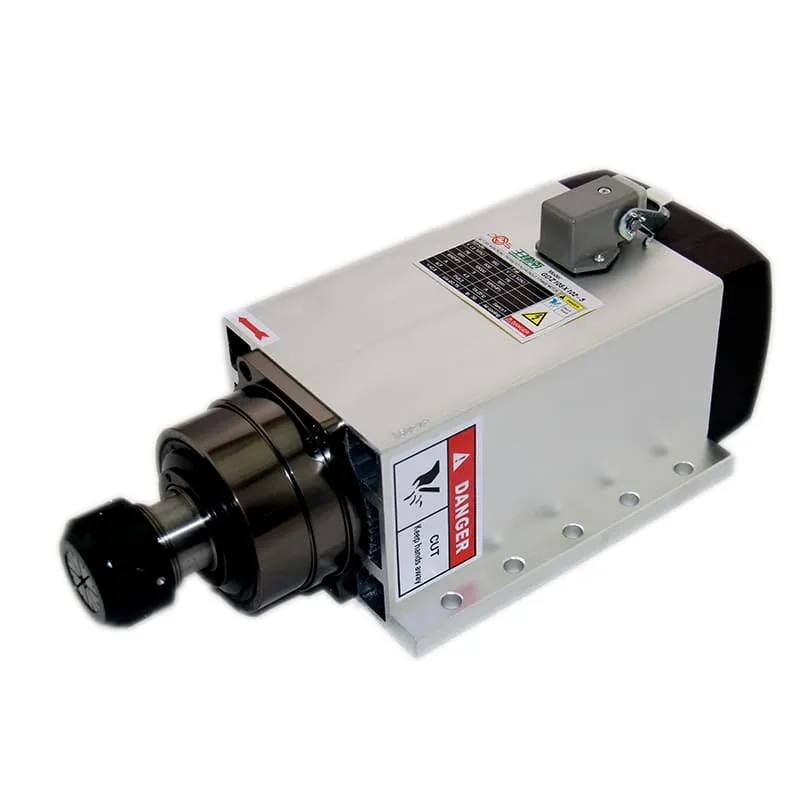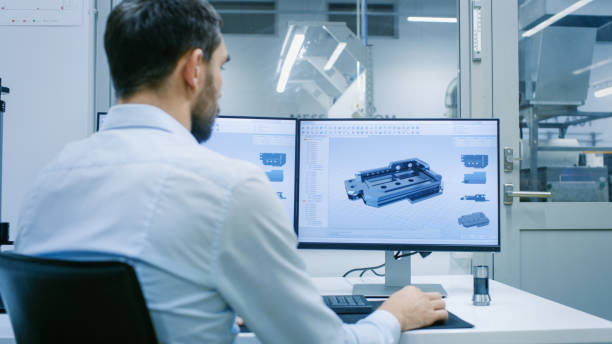What Is CNC Lathe Machine
CNC lathe machines are a fundamental part of the modern manufacturing world, playing a vital role in producing parts with intricate details and precision. These machines are utilized to shape different materials, such as metal, plastic, or wood, into specific designs by using a rotating main spindle. In this guide, we will explore what a CNC lathe machine is, how it operates, its applications, and how it differs from other CNC machinery. This comprehensive overview will also highlight the different types of CNC lathe machines, components, and their role in manufacturing today.
Understanding CNC Lathe Machines
A CNC lathe machine is a type of Computer Numerical Control (CNC) machine used primarily for turning operations. The machine is operated by a computer, which allows precise control over the rotation of the workpiece and the movement of the cutting tools.
- Turning Operation: Turning is the primary process where a cutting tool removes material from a rotating workpiece. The cutting tool is moved along the workpiece to create cylindrical shapes.
- Components: A CNC lathe typically features a main spindle, a chuck to hold the workpiece, tool turrets, and an automatic tool changer.
- Precision and Automation: CNC lathes provide a high level of precision and automation, making them ideal for mass production where consistency is required.
Key Components of a CNC Lathe Machine
- Main Spindle: The core part of the CNC lathe that holds and rotates the workpiece.
- Cutting Tools: Mounted on the tool turret, these tools remove material to form the desired shape.
- Chuck: A device attached to the main spindle that clamps the workpiece securely.
- Tool Turret: This is where multiple cutting tools are mounted, allowing for different operations to be performed without manually changing the tools.
To achieve high precision during CNC lathe operations, using a high-quality spindle motor like the 3.5KW ER25 Air-Cooled Spindle is crucial to ensure smooth performance and stability.

How Does a CNC Lathe Machine Work?
A CNC lathe operates by rotating a workpiece while a fixed cutting tool is used to shape it. The precise movements are controlled by programming, often written in G-code or M-code. Let’s delve into the details of how these machines function.
1. Loading the Workpiece
The workpiece is first loaded into the chuck, which is a clamp that holds it securely. The main spindle rotates the workpiece at high speeds. Depending on the part, the rotation speed may be adjusted for precision.
2. Programming
The machine follows a G-code program that provides detailed instructions on how to move the cutting tool along the X, Y, and Z axes. CNC programmers use CAM software to generate these programs, which tells the machine how to make precise cuts.
- G-code and M-code: G-code directs movements, while M-code manages auxiliary functions like coolant control and tool changes.
3. Cutting the Workpiece
Cutting tools are precisely maneuvered around the workpiece by the tool turret, which can hold multiple tools at once. This allows various operations—such as facing, turning, or threading—to be performed without manual intervention.
For specific turning operations requiring more torque, it’s beneficial to use a spindle such as the 5.5KW ER32 4-Pole Air-Cooled Spindle.

Types of CNC Lathe Machines
CNC lathes come in various types, each designed for different applications. Here, we will explore the most common types of CNC lathe machines available today.
1. 2-Axis CNC Lathe
The 2-axis CNC lathe is the most basic type of CNC lathe. It operates with X and Z axes, making it ideal for cylindrical parts.
- Operations: Basic operations include facing, turning, and boring.
- Simplicity: Suitable for parts that require simple, symmetrical shaping, such as shafts and rods.
2. 3-Axis CNC Lathe
A 3-axis CNC lathe includes an additional axis—often the Y-axis—which allows more intricate cuts and movements.
- Complex Machining: It is capable of producing more complex shapes, making it useful for parts that need detailed features.
- Milling Capabilities: Some 3-axis lathes are combined with milling capabilities, allowing additional features to be machined without changing setups.
3. Multi-Spindle CNC Lathe
In industries requiring mass production, a multi-spindle CNC lathe is employed. It has multiple spindles that allow several parts to be machined simultaneously.
- Efficiency: Highly efficient for mass production.
- Complexity: Often used for producing automotive and aerospace components where high volume and precision are required.
Applications of CNC Lathe Machines
CNC lathes are versatile and used across multiple industries. Let’s examine some of their most common applications.
1. Automotive Industry
In the automotive industry, CNC lathes are used to produce key components such as axles, engine parts, and shafts. Precision is critical here since components must fit together without error.
- Turned Components: The lathe is used to create precisely turned components that are integral to vehicle functionality.
2. Aerospace Sector
The aerospace sector demands precision, and CNC lathes are ideal for producing lightweight, strong, and perfectly shaped components.
- Tight Tolerances: Aerospace parts must be machined to exact specifications with very tight tolerances.
- Advanced Materials: Aerospace machining often involves working with advanced materials, like titanium and composites, requiring spindles such as the 4.5KW ER32 Air-Cooled Spindle.

3. Medical Equipment Manufacturing
In medical device manufacturing, CNC lathes are used to produce small, intricate components for surgical tools, implants, and medical instruments.
- Precision: CNC lathes ensure that components are manufactured with high precision, which is critical for medical devices.
Advantages of CNC Lathe Machines
CNC lathes offer several advantages that make them popular in manufacturing environments.
- Precision: CNC lathes provide superior accuracy in producing detailed and precise parts.
- Automation: The automated nature of CNC lathes reduces the need for manual intervention, leading to consistent production and lower labor costs.
- Versatility: They can handle a wide range of materials, including metals, plastics, and even some composite materials.
Improved Productivity
A key advantage of CNC lathes is their productivity. Since the machine can work continuously, 24/7, it is highly efficient for mass production.
- Reduced Downtime: By reducing the need for manual intervention, CNC lathe machines minimize downtime between operations, improving throughput.
Comparing CNC Lathes to CNC Milling Machines
While both CNC lathes and CNC milling machines are used to create complex parts, they differ significantly in how they operate.
1. CNC Lathes
- Rotating Workpiece: CNC lathes rotate the workpiece, and the tool moves along its axis to cut material.
- Ideal for Cylindrical Parts: Lathes are best suited for producing cylindrical parts such as shafts, bushings, and threaded components.
2. CNC Milling Machines
- Stationary Workpiece: Unlike lathes, CNC milling machines keep the workpiece stationary while the cutting tool rotates and moves to shape the part.
- Complex Geometries: Milling machines can produce complex parts with various geometries, including slots, pockets, and holes.
Challenges in CNC Lathe Operation and How to Overcome Them
Operating a CNC lathe machine comes with certain challenges, especially for beginners. Here’s a look at some common issues and how to address them.
1. Tool Wear and Breakage
Tool wear and breakage are common issues when working with a CNC lathe. Tools may wear down quickly, especially when machining tough materials.
- Solution: Proper selection of cutting parameters, such as feed rate and spindle speed, can help minimize tool wear. Additionally, using coolants can extend tool life.
2. Programming Errors
Errors in the G-code or incorrect tool selection can lead to parts being scrapped.
- Solution: Always verify programs using simulation software before running them on the machine. This helps identify any issues before actual production.
FAQs on CNC Lathe Machines
1. What is the main purpose of a CNC lathe machine?
A CNC lathe machine is used for turning operations to create cylindrical parts by removing material from a rotating workpiece.
2. How does a CNC lathe differ from a CNC milling machine?
CNC lathes rotate the workpiece, while CNC milling machines keep the workpiece stationary and move the cutting tool around it.
3. What materials can be used on a CNC lathe?
CNC lathes can machine a wide range of materials, including metals (steel, aluminum, brass), plastics, and even some composite materials.
4. Are CNC lathes suitable for mass production?
Yes, CNC lathes are highly suitable for mass production due to their high level of precision, automation, and ability to operate 24/7.
Conclusion
CNC lathe machines are indispensable tools in modern manufacturing, providing unparalleled precision, automation, and efficiency for producing cylindrical and complex parts. Whether you’re working in the automotive, aerospace, or medical industry, CNC lathes can significantly boost productivity and ensure consistent quality. By choosing the right tools, such as quality spindles like those offered at SpindleMotorShop, you can optimize your lathe operations for better performance and results.
For those looking to enhance their machining capabilities, SpindleMotorShop offers a wide variety of CNC spindles and accessories that can meet your needs, whether you’re working on simple or highly intricate projects.

